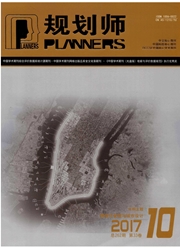

 中文摘要:
中文摘要:
当前我国发展已进入新常态,部分地区的经济发展和城镇化进入紧缩期。在国际倡导"绿色经济"发展以及国内"区域异化"的大背景下,我国城镇化的"绿色转型"面对经济基础、发展阶段、动力和危机各异的城市个案,转型的动力、思路和举措应当各不相同。文章借鉴紧凑城市和收缩城市理论中的可持续城市发展模式成果,以沿海城市深圳和东北老工业城市阜新为例,提出在"降增速、去杠杆、调结构、促公平"的经济发展新常态下,我国未来"仍然持续增长"和"持续慢增长或收缩"两种类型的城市实现"绿色转型"的新型城镇化路径建议。
 英文摘要:
英文摘要:
New normal requires "lower speed, de-leverage, structural adjustment, and promoting equity". Some regions have come to a shrinking stage in the new normal. Under the initiation of "green economy" and "characteristic development", "green transition" has different practices with respect to varying economic foundation, development phase, and driving force. Learning from compact city and shrink city theories, the paper takes Shenzhen and Fuxin as study cases, proposes suggestions for cities of "sustained growth" and cities of "slow growth or shrinkage" in the new normal.
 同期刊论文项目
同期刊论文项目
 同项目期刊论文
同项目期刊论文
 期刊信息
期刊信息
